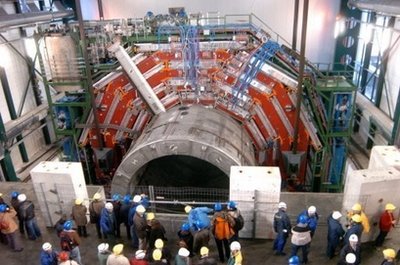Five facts about CERN's Large Hadron Collider

* Though built to study the smallest known building blocks of all things -- known as particles -- the LHC is the largest and most complex machine ever made. It has a circumference of 27 km (17 miles) and lies 100 metres (330 feet) under the ground, straddling French and Swiss territory.
* At full power, trillions of protons will race around the LHC accelerator ring 11,245 times a second, travelling at 99.99 percent the speed of light. It is capable of engineering 600 million collisions every second.
* When two beams of protons collide, they will generate temperatures more than 100,000 times hotter than the heart of the sun, concentrated within a miniscule space. Meanwhile, the cooling system that circulates superfluid helium around the LHC's accelerator ring keeps the machine at minus 271.3 degrees Celsius (minus 456.34 degrees Fahrenheit).
* To collect data of up to 600 million proton collisions per second, physicists and scientists have built devices to measure the passage time of a particle to a few billionths of a second. The trigger system also registers the location of particles to millionths of a metre.
* The data recorded by the LHC's big experiments will fill around 100,000 dual-layer DVDs each year. Tens of thousands of computers around the world have been harnessed in a computing network called "The Grid" that will hold the information.